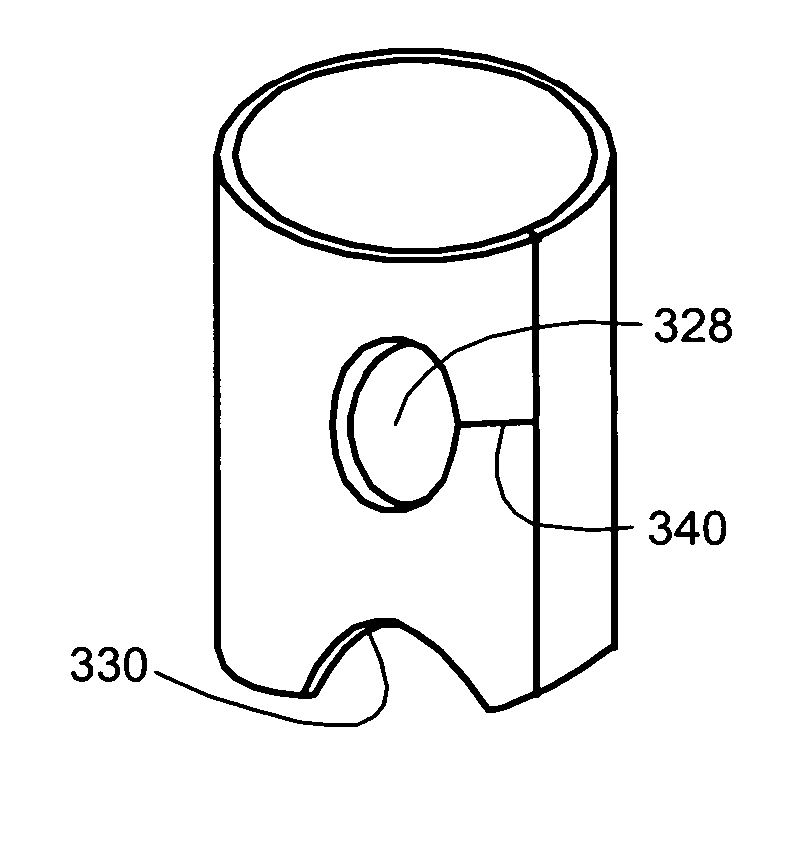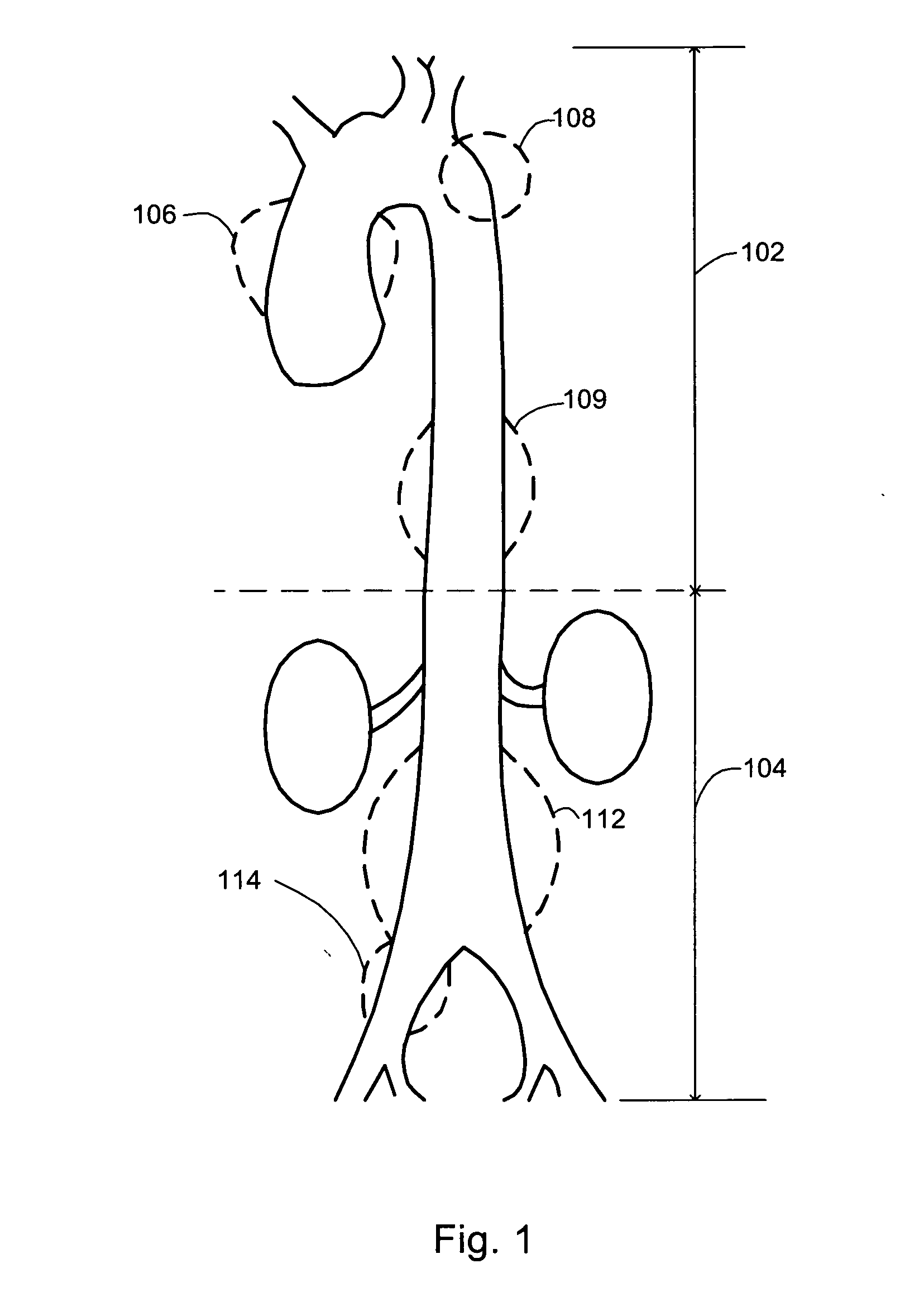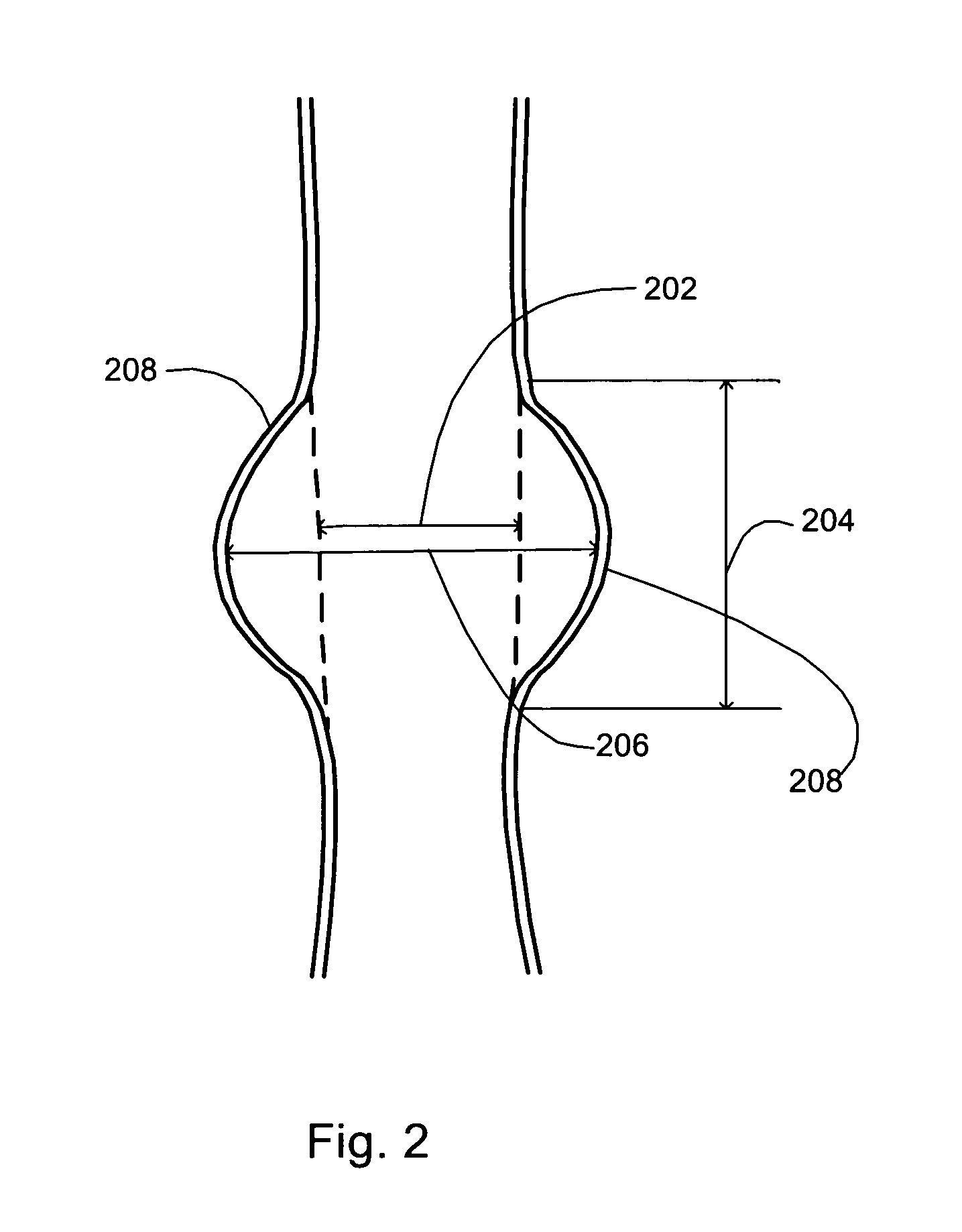Methods and devices for extravascular intervention
a technology of vascular intervention and vascular device, which is applied in the field of methods and devices for vascular intervention, can solve the problems of relatively high mortality risk, limited treatment or intervention of patients with aortic aneurysms, pain and discomfort of patients,
- Summary
- Abstract
- Description
- Claims
- Application Information
AI Technical Summary
Benefits of technology
Problems solved by technology
Method used
Image
Examples
Embodiment Construction
[0026] Aneurysms may occur in any blood vessel; however, aneurysms commonly and typically occur in the aorta. An anterior view of a human aorta shown in FIG. 1 depicts typical locations on the aorta where aneurysms may occur. Referring to FIG. 1, aortic aneurysms may occur in the thoracic cavity 102 or in the abdominal cavity 104. Aneurysms in the thoracic cavity may occur in any location thereon, such as on the ascending aorta 106, the arch of the aorta 108, the descending aorta 109, the thoracic aorta 110, or any vessels branching therefrom. Aneurysms in the abdominal cavity may similarly occur in any location thereon, such as on the abdominal aorta 112, the iliac arteries 114, or any vessels branching therefrom.
[0027] Aneurysms generally occur in vessels having weakened walls. Blood pressure in such vessels causes dilating or bulging at the weakened vessel walls, and, ultimately, the weakened walls may be overcome by the blood pressure. Referring to FIG. 2, a vessel having a nor...
PUM
 Login to View More
Login to View More Abstract
Description
Claims
Application Information
 Login to View More
Login to View More - R&D
- Intellectual Property
- Life Sciences
- Materials
- Tech Scout
- Unparalleled Data Quality
- Higher Quality Content
- 60% Fewer Hallucinations
Browse by: Latest US Patents, China's latest patents, Technical Efficacy Thesaurus, Application Domain, Technology Topic, Popular Technical Reports.
© 2025 PatSnap. All rights reserved.Legal|Privacy policy|Modern Slavery Act Transparency Statement|Sitemap|About US| Contact US: help@patsnap.com



